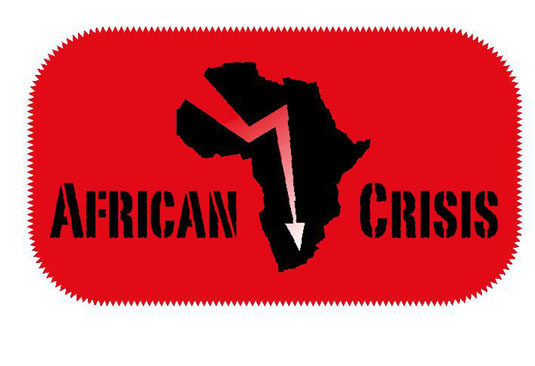WARNING: This is Version 1 of my old archive, so Photos will NOT work and many links will NOT work. But you can find articles by searching on the Titles. There is a lot of information in this archive. Use the SEARCH BAR at the top right. Prior to December 2012; I was a pro-Christian type of Conservative. I was unaware of the mass of Jewish lies in history, especially the lies regarding WW2 and Hitler. So in here you will find pro-Jewish and pro-Israel material. I was definitely WRONG about the Boeremag and Janusz Walus. They were for real.
Original Post Date: 2008-04-27 Time: 00:00:00 Posted By: Jan
[This is quite scary folks – actually more scary than load-shedding itself. I’m quite convinced now that people must very seriously think about hooking up generators. If you have a business, you MUST have backup power – or an accident could destroy your business. On the other hand, the business that has got power will be able to make money while others grind to a halt. Jan]
Electricity experts have warned Eskom that its load-shedding strategy is backfiring, destroying electricity infrastructure and plunging communities into extended periods without power.
However, despite the warning, the government has insisted that load shedding – as the best strategy to conserve power – will continue. This means that the lull in power cuts over the holidays is a respite and scheduled blackouts will resume.
At least two substations, in Port Elizabeth and Kempton Park, have exploded because of load-shedding this week, plunging communities into darkness for days.
Experts warned that the ageing infrastructure of the country’s substations was not coping with load-shedding, and that to continue would result in an even worse crisis.
This week, Cape Town called on Eskom to implement different energy-saving methods, arguing that load-shedding was not yielding the desired results.
Cape Town technicians argued that, instead of saving the required 10 percent on electricity usage, load-shedding was seeing the opposite – where businesses and residents increased their electricity usage during those times when electricity was available, so adding to the pressure on the power grid. This could lead to damaged substations and prolonged blackouts.
But after a meeting on Wednesday between stakeholders, Eskom and various government departments, the authorities maintained that load-shedding would continue.
Bheki Khumalo, the department of minerals and energy spokesperson, said that there were no plans to scrap load shedding until the energy-saving target was met; “everybody should accept there would be a “period of pain”.
“It’s the best way of conserving energy under the circumstances. It will keep our system running. It will ensure predictability. That’s why there’s a massive campaign to get everybody to know exactly where load shedding will happen.
“The 10 percent saving [target] is still there. We must all strive for energy efficiency. There are no plans to change that as far as the government is concerned,” he said.
Khumalo criticised businesses that used extra electricity to make up for losses during load-shedding: “I think industry must come on board, they must work with the government in achieving those targets we’ve set for ourselves.”
Meanwhile, the deadline for written submissions on Eskom’s proposed 53 percent electricity tariff hike is on Tuesday.
The National Energy Regulator of South Africa (Nersa) will decide on June 6, after a series of public hearings – set to begin on May 23 – whether to accept Eskom’s application for a 53 percent increase.
Those vehemently opposed to the increase include the ANC, Cosatu and the business fraternity.
This weekend, the ANC said it was still busy preparing its submission to Nersa. Business Unity South Africa (Busa) has urged Nersa to delay the public hearings to allow more time for consultation.
Details of a new, differentiated tariff structure that would penalise big consumers of electricity are still to be finalised. The government is only expected to make an announcement about this proposed sliding scale weeks from now.
Meanwhile, Eskom is implementing a range of measures that it hopes will gradually ease the crisis. More than 300 retired personnel, mostly engineers and technicians, have been rehired, Andrew Etzinger, an Eskom spokesperson, said.
“Eskom (has) hired selective retirees mostly on a consultancy basis and with a focus to assist Eskom with knowledge transfer to younger professionals.
“Currently there are approximately 300 employees beyond 65 years of age working on a flexible contract for Eskom. More than 70 percent of these are in the engineering [and] technical skills field,” he said.
These retirees had contracts ranging between 12 and 24 months.
Eskom has awarded contracts totalling more than R40-billion for building two new power stations: Medupi in Limpopo and Project Bravo in Mpumalanga. However, both stations will start operating only after 2012.
In the interim, three mothballed power stations – Camden, Grootvlei and Komati – were being returned to service, Etzinger said.
“The plans are to bring all of them back on line to assist in alleviating the current power challenges.”
The shortage of coal had worsened the power crunch, but Etzinger said Eskom had managed to increase its coal stocks: “A coal recovery team has been established to tackle the coal issue and Eskom is steadily increasing its stock levels.
“We have secured contracts for 39 million tons of additional coal over the next two years,” he said.
